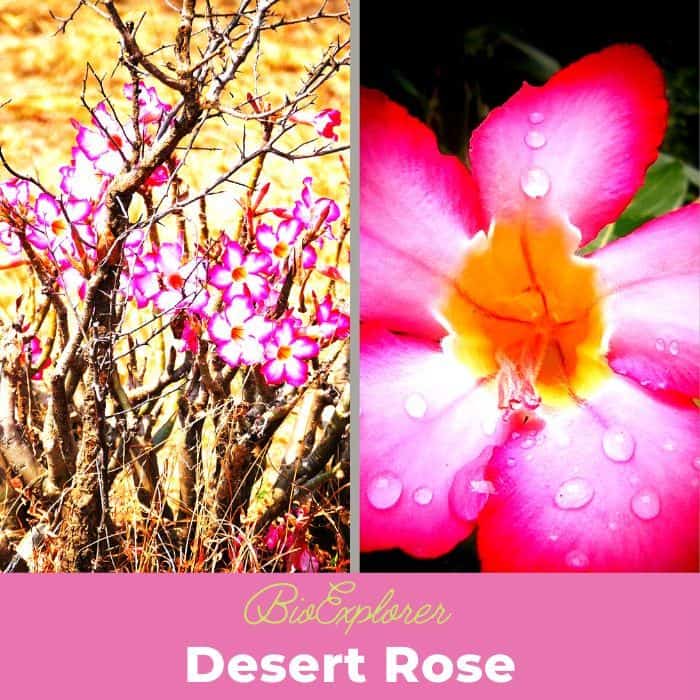
| Plantae | Gentianales | Apocynaceae | Adenium | Adenium obesum |
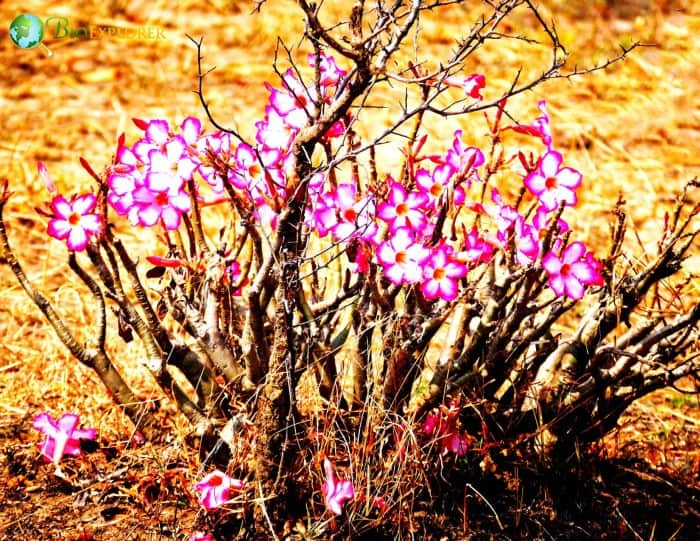
- Plant Type: Evergreen, drought-deciduous succulent shrub.
- Common Names: Desert Rose, impala Lily, mock azalea, kudu, Sabi star.
- Colors: Red, rose, and pink with a whitish blush outward the throat.
- Flower Dimensions: 0.79- 1.97 inches tubular length, and the outer part diameter is 1.6 to 2.4 inches.
- Flowering Seasons/Months: Summer
- Deserts with Desert Rose: Sahel regions south of Sahara, Tropical Africa, Arabian Peninsula.
Suggested Reading: Saharan Antelope: Scimitar Oryx
Desert Rose Characteristics
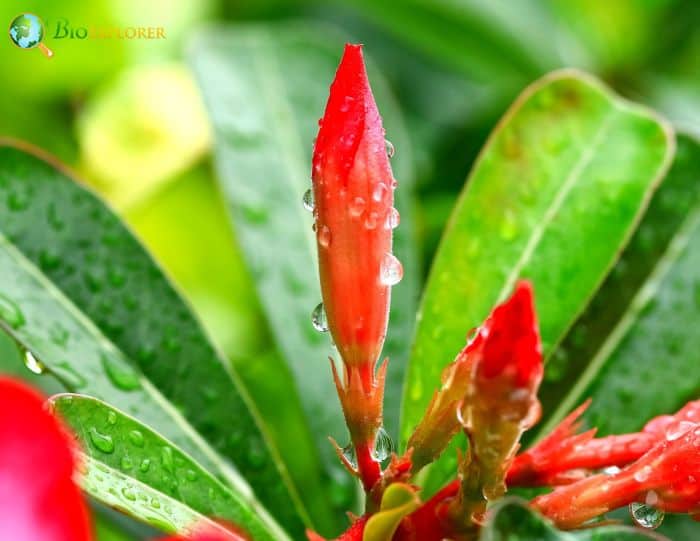
Desert rose is an evergreen, deciduous shrub of the Gentianales order. This species can grow from 3.3 to 9.8 ft. It is a trendy ornamental plant with plumeria-like flowers.
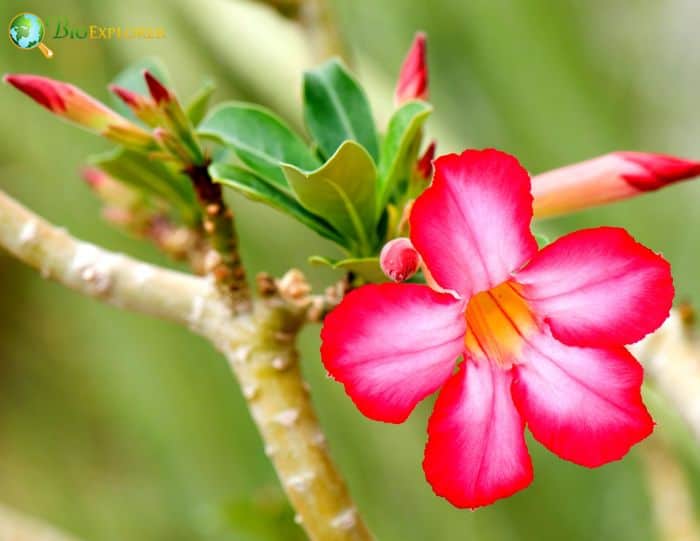
- The stems of the Desert rose are pachycaul. The trunk is thick succulent.
- The Desert rose leaves are simple, entire, and spirally arranged. The leaves are leathery, thin, and delicate. They measure 2-5.9 inches long and 0.39- 3.15 inches broad.
- The flowers of the Desert rose are in a trumpet shape.
- The desert rose will thrive in an environment of full sunlight. It grows dormant for the winter season.
- The species is long-lived. It mainly grows in hilly, rocky, and sandy soil.
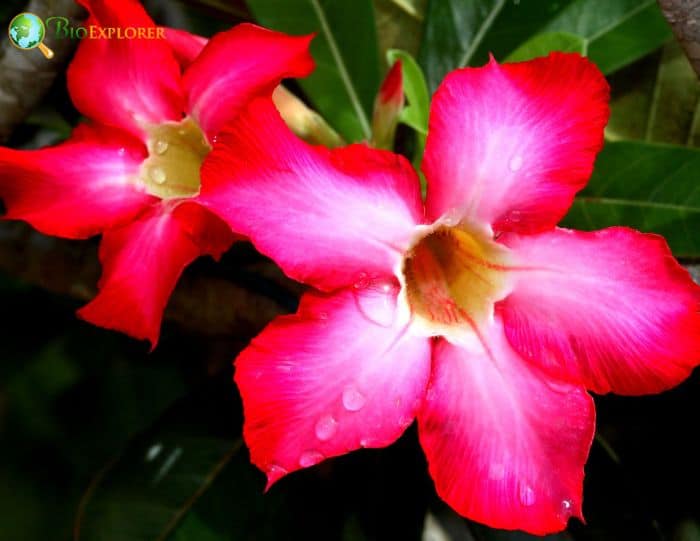
Desert Rose Facts
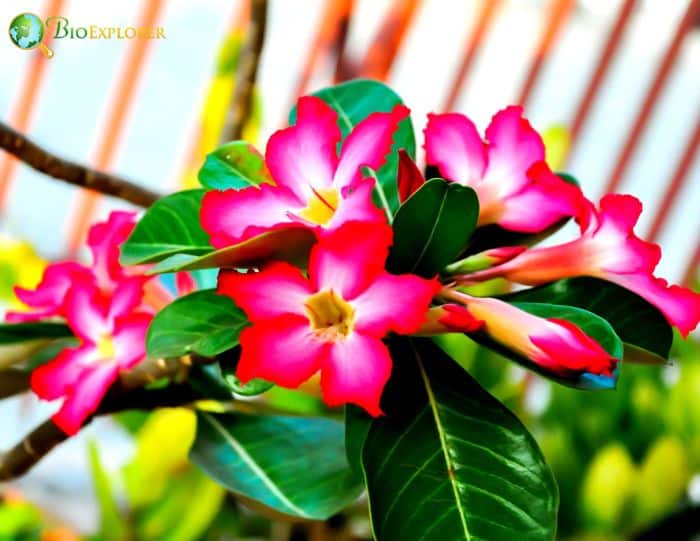
- The desert rose cannot endure temperatures of the prolonged cold[1]. Once the temperature drops to 50° F, this plant will lose its leaves and undergoes slowed dormant phase.
- The desert rose symbolizes[2] hope during dry times since the plant is vigorous and can survive harsh climatic conditions.
- The desert rose is not a rose. It is not a member of the Rosaceae family. It does not have thorns and does not resemble the flowers of any variety of roses.
- In China, the desert rose is a symbol is considered a wealth plant or a flower of prosperity. Therefore, it is named fuguihua in Chinese. Fu means rich or abundant, gui means majestic, and huameans flower.
- The scientists discovered that the Adenium obesum showed great potential to treat viruses. Their research[3] manifested that the species showed anticancer, antiviral, antibacterial, trypanocidal, acaricidal, molluscicidal, antioxidant, and piscicidal properties.
Suggested Reading: Types of Flowers List | Birth Flowers Of June
Cite This Page
APA7MLA8Chicago
BioExplorer.net. (2025, January 15). Desert Rose. Bio Explorer. https://www.bioexplorer.net/plants/flowers/desert-rose/.
BioExplorer.net. "Desert Rose" Bio Explorer, 15 January 2025, https://www.bioexplorer.net/plants/flowers/desert-rose/.
BioExplorer.net. "Desert Rose" Bio Explorer, January 15 2025. https://www.bioexplorer.net/plants/flowers/desert-rose/.
















